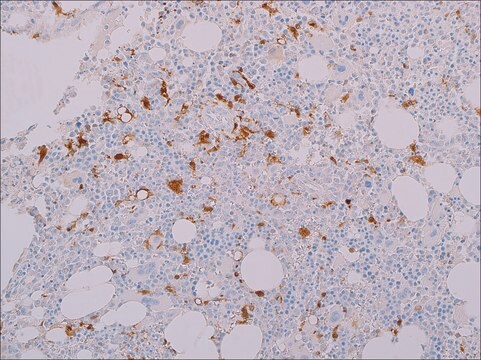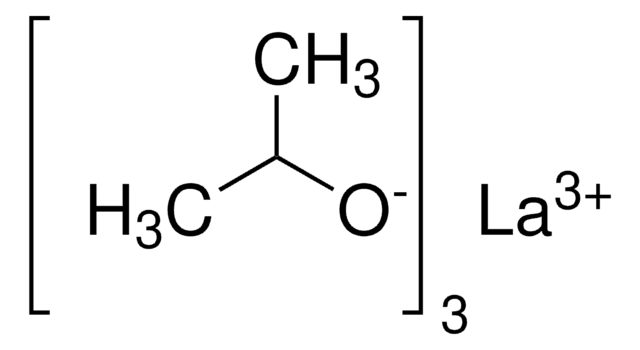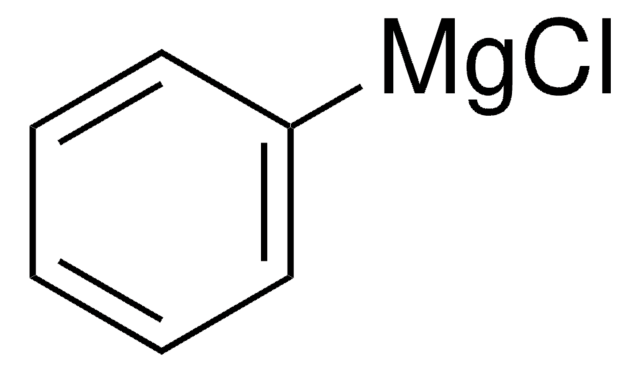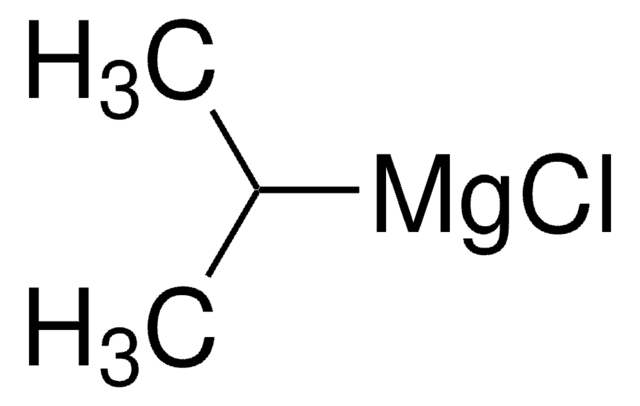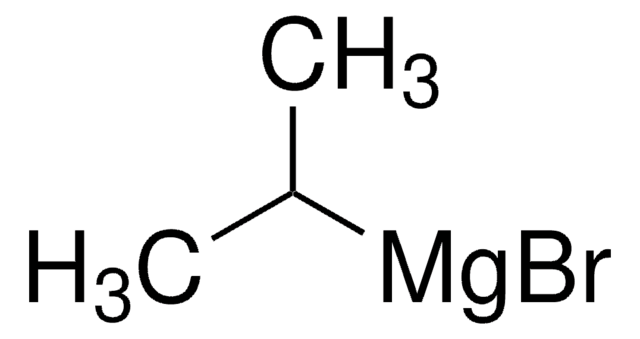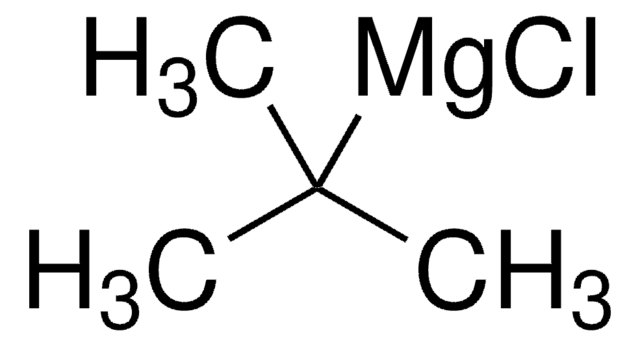703559
Lanthanum(III) chloride bis(lithium chloride) complex solution
0.6 M in THF
Synonym(s):
Lanthanum trichloride lithium chloride complex
About This Item
Recommended Products
form
liquid
Quality Level
reaction suitability
reagent type: catalyst
core: lanthanum
concentration
0.6 M in THF
16 % (w/w)
density
1.05 g/mL at 25 °C
SMILES string
[Li]Cl.[Li]Cl.Cl[La](Cl)Cl
InChI
1S/5ClH.La.2Li/h5*1H;;;/q;;;;;+3;2*+1/p-5
InChI key
YSKOYVQYUJUXCN-UHFFFAOYSA-I
Application
- Mediates Grignard additions
- Reagent for metal exchange reactions
- Promoter for the addition of organometallic compounds to sterically hindered, enolizable or α,β-unsaturated ketones or imines
Legal Information
Signal Word
Danger
Hazard Statements
Precautionary Statements
Hazard Classifications
Acute Tox. 4 Oral - Aquatic Chronic 3 - Carc. 2 - Eye Dam. 1 - Flam. Liq. 2 - Met. Corr. 1 - Skin Sens. 1 - STOT SE 3
Target Organs
Central nervous system, Respiratory system
Supplementary Hazards
Storage Class Code
3 - Flammable liquids
WGK
WGK 2
Flash Point(F)
62.6 °F
Flash Point(C)
17 °C
Personal Protective Equipment
Certificates of Analysis (COA)
Search for Certificates of Analysis (COA) by entering the products Lot/Batch Number. Lot and Batch Numbers can be found on a product’s label following the words ‘Lot’ or ‘Batch’.
Already Own This Product?
Find documentation for the products that you have recently purchased in the Document Library.
Customers Also Viewed
Articles
While the 1,2-addition of Grignard reagents to ketones is undoubtedly a powerful transformation, oftentimes selectivity issues arising from competitive alpha-deprotonation detract from the use of these reagents.
Sigma-Aldrich.com presents an article concerning New Reagents for Selective Metalation, Deprotonation, and 1,2-Additions.
Transformative reagents for selective metalation, deprotonation and nucleophilic additions have allowed for unprecedented selective converstions to reactive intermediates within a molecule which contains sensative functionalities under mild reactions.
Our team of scientists has experience in all areas of research including Life Science, Material Science, Chemical Synthesis, Chromatography, Analytical and many others.
Contact Technical Service



